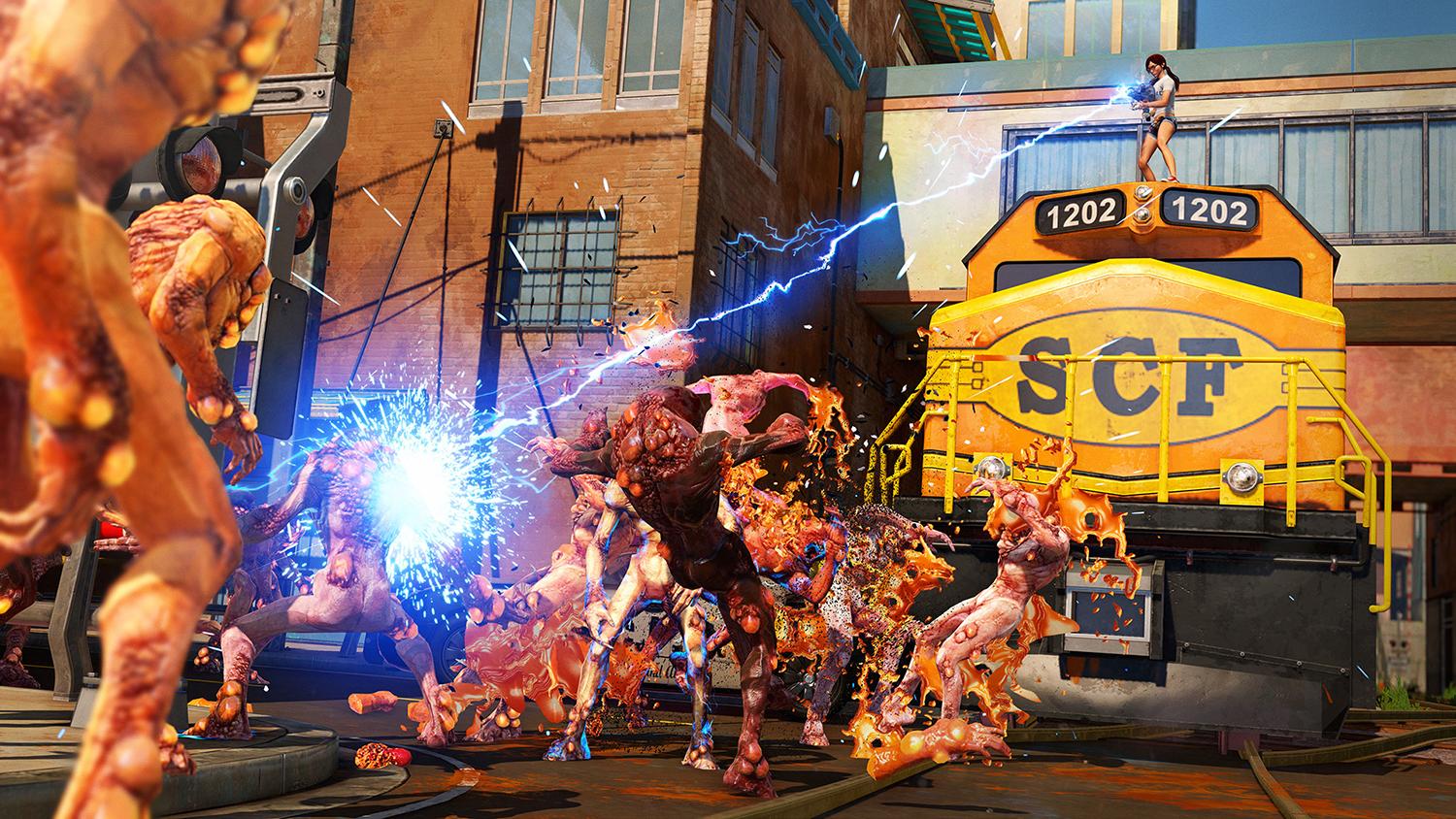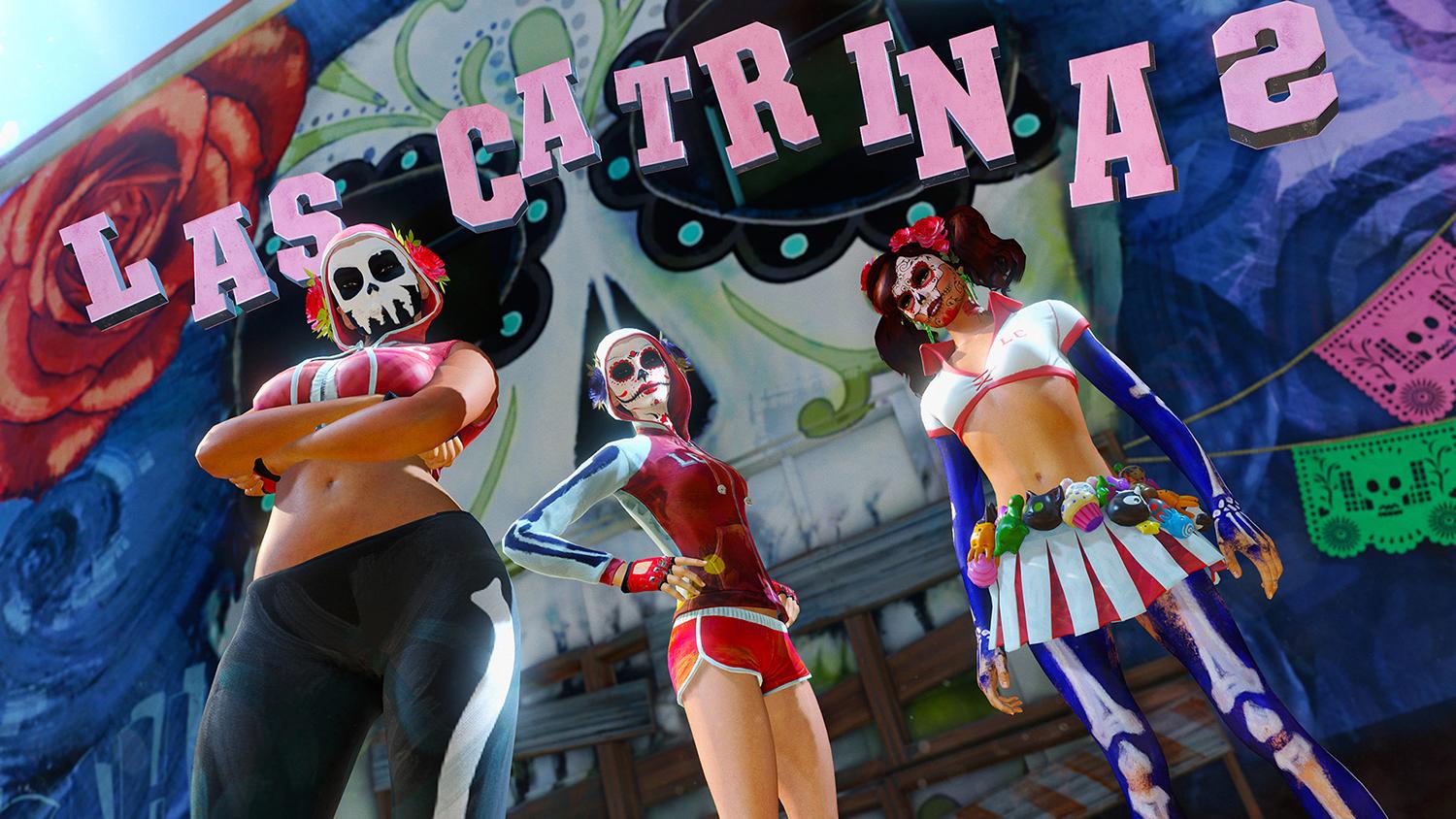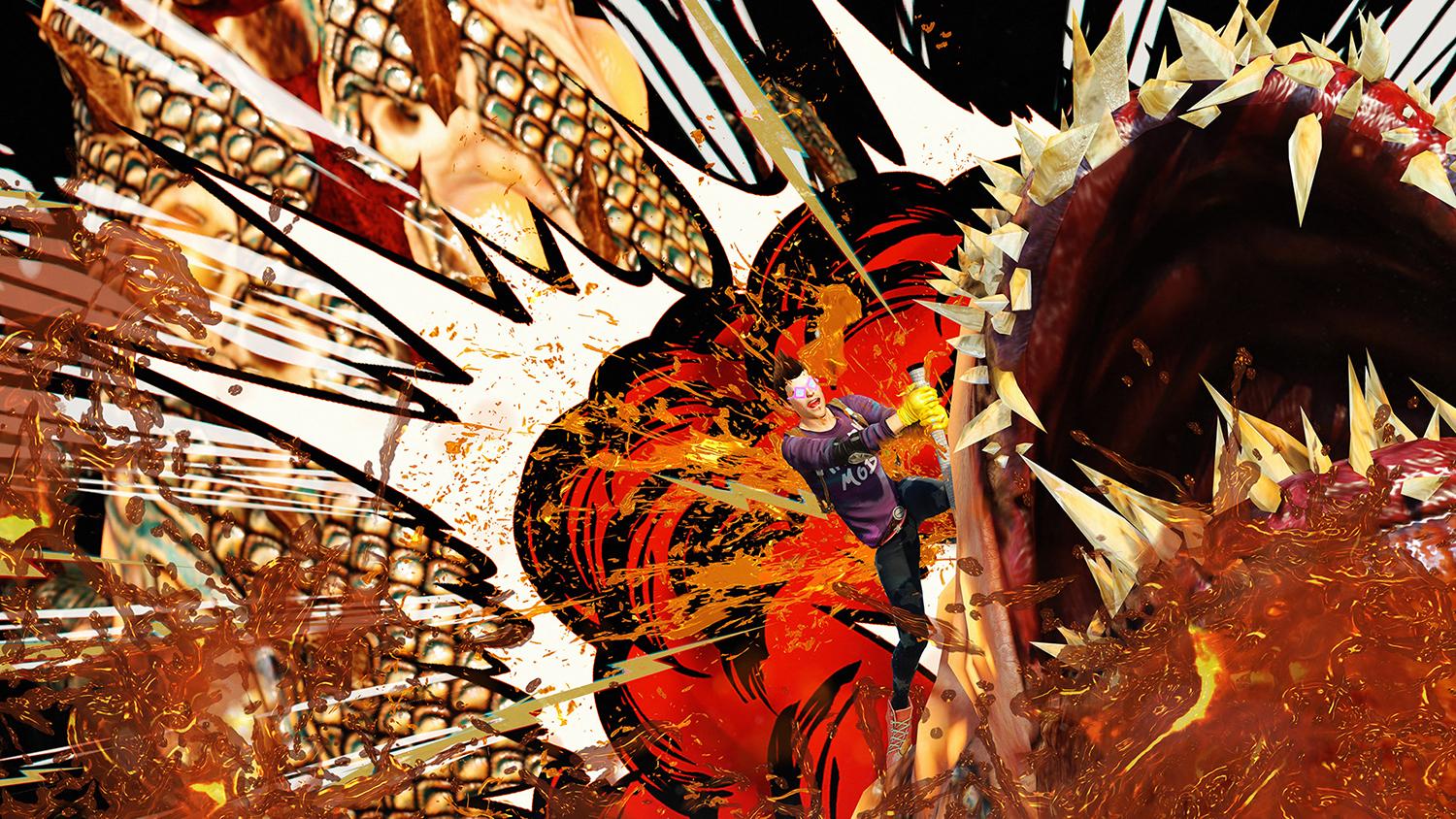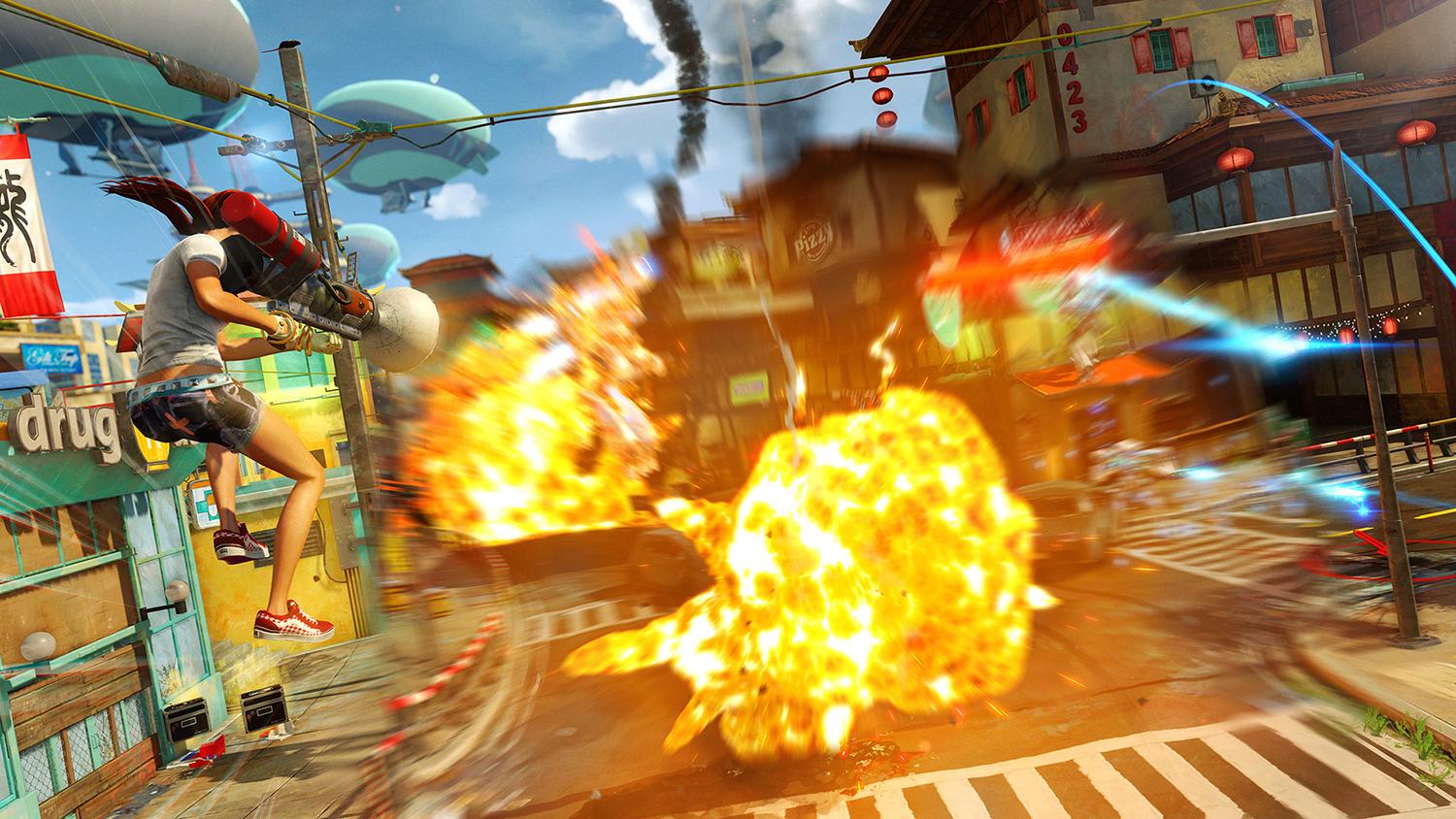
Growing up in Cali, Smith and Murray were greatly influenced by the hardcore punk aesthetic of bands like Flipper, the Dead Kennedys, Black Flag, the Misfits, the Exploited, GBH, and Bad Brains, and they wanted that collective vibe to be all over Sunset Overdrive. The game’s true sonic blueprints can be found in The Adolescents’ punishing Rip It Up — “because it’s an anthem for wanton destruction,” according to Smith — and proto-punk pioneers like Iggy Pop and the MC5.
“Playing MC5’s Kick Out the Jams, Motherf–kers! in a Microsoft conference room was pretty fun.”
“They served as huge influences for us,” Smith confirms. “Internally, we used to say, ‘What would Iggy do?’ as our mantra. And in our first pitch to Microsoft, we put on the MC5 singing: ‘Kick out the jams, motherf–kers!’ Yeah, playing that song in a Microsoft conference room was pretty fun.”
Initially, the Overdrive team thought about licensing existing material or using a streaming service, but neither option catered to the pure DIY feel they wanted. To get the necessary hard-charging aural dynamic, Insomniac partnered with San Francisco-based music-production powerhouse Pyramind to help enlist modern garage-punkers The Bronx, Bass Drum of Death, Cheap Time, Meat Market, Boats, Brenna Red, and Dan Sartain — along with some EDM acts like BNZA, K Theory, Liam Shy, and Auberon Shull — to create the all-original, madly intense soundtrack for FizzCo’s energy-drink launch gone awry.
“We wanted that heavy and hardcore energy to drive the gameplay. Everything needed to be fast and have a sense of momentum,” Smith explains. “Ultimately, we were looking for music that didn’t take itself too seriously, but still had the energy and the driving BPM we needed.

The Bronx Sunset City
“For inspiration, we looked to bands like FIDLAR, who are from L.A., an Australian band called DZ Deathrays, Bass Drum of Death — basically the spawn of Jay Reatard and the Memphis sound — and Ty Segall. That style of music hit all those notes. It was in the right BPM range, and it had that guitar-riff-driven energy.”
The key was to match BPM (that’s beats-per-minute, for you less musically inclined readers) with movement and momentum-based gameplay — or the lack thereof.
“If the music is really pumping, there’s a lot going on onscreen,” says Smith. “You’ve been killing all your enemies, there’s a lot more stuff coming out at you, you’re using more of those crazy weapons. You’re jumping, grinding, and bouncing, so it all just plays into that idea of momentum. You started out in silence with nothing going on, and now you’ve built up to this cacophony of music and sound and explosions. As things get more chaotic, it’s reflected through audio and video.”

Bass Drum of Death Between the Lines
Smith says the best example of this A/V mesh comes during the game’s first Night Defense: “We’ve taught you how to not play like a normal cover shooter, and we really throw a lot of enemies at you — plus there’s a countdown timer,” he says. “There’s a track by The Bronx playing, and it gets really intense. That’s the first time where we know players get a chance to experience the music working along with the intensity of the gameplay.”
But sometimes, fast can be too fast, and Smith and the creative team quickly came across a major issue in that regard during the game’s development. “A lot of times when you put in different styles of music, it just doesn’t work at all,” he admits.
“It screws up the game players. We could see in usability testing where they were actually getting worse at the game because they were playing with music that didn’t match. Because it was always fast-pumping, they constantly felt like they were pushing buttons too slowly. After a while, we figured out we needed some music that was going to fit the ebb-and-flow tempo of the game.”

Cheap Time Where Do We Go From Here
Tonal-matching was another important element to harness. “A lot of the bands I mentioned before take themselves pretty seriously or have a lot of serious subject matter,” Smith explains. “For example, the Dead Kennedys are ultimately satirists, but it’s hard to have a fun, in-the-end-times zombie apocalypse kinda game when you’re talking about Pol Pot, Cambodia, massacres, and genocide.”
Smith believes the momentum-driven sonic shifts are critical to Overdrive’s success: “There are games that have a lot more intense punk soundtracks, like the Tony Hawk games. Even though I love that music and that’s the soundtrack of my childhood, I would always be turning the audio down after hearing the same songs over and over and over again.”
A Punk Rock Cameo
One of Sunset Overdrive’s standout missions introduces Melvins frontman Buzz “King Buzzo” Osbourne as a supporting character. When you meet a sick kid who has never seen a rock concert, you decide to assemble a band in the post-apocalyptic city and put on a show. A tip leads you to fortified music bar where Buzzo is holing up.
Osbourne was into the idea, but Smith – a Melvins fan who helped lead writer John Paquette settle on the singer/guitarist – had concerns about the rock star’s willingness to participate in mocap sessions.
“I was really worried when we were on the mocap set and I got to thinking, ‘Man, does he know he has to put on this suit?’ We weren’t sure if people had told him or he got the message, but he came into the studio, took one look at it, and walked out the door.”
Smith laughs. “I was like, ‘What happened?’ But he was just walking back because somebody had told him to get suited up!”
“He did it and it was all cool, and afterwards I said to him, ‘I really thought you were going to split.’ He said, “Nahhh! I get paid to make a fool of myself in front of people!’ So it was awesome. A total dream come true.”
Enter Sunset’s submixes, which build into full songs as your gameplay ramps up. Smith breaks it all down: “If an enemy is targeting you, the first submix might have just the bass drum, the snare, and a little bit of the rhythm guitar; just enough to have a basic structure. And the next step up, if the intensity goes to a higher rating, we’ll introduce the bass guitar. The next rating, we introduce a more robust, distorted version of the rhythm guitar, and maybe just the hi-hat or the ride cymbal.
“Internally, we used to say, ‘What would Iggy do?’ as our mantra.”
As noted earlier, having the soundtrack reflect the gameplay’s ebb and flow was absolutely essential. “The first time we put it in, the music was playing constantly,” Smith acknowledges.
“And while that’s great because you could hear all the music, it is an open-world game. You could be spending hours and hours in there, and we didn’t want people getting worn out with the music, especially if you’re not engaging with the enemy and just exploring. Then, you want to just hear the ambience in the world — all the advertisements going around and the effects when you get up high; everything. It just felt really weird when you were doing these calm exploration pieces, and you got this driving music the entire time.”
The pendulum swung back and forth as the team decided just how the music would be implemented. “At first there was too much music, and then there was not enough music,” Smith explains. “There was a point when all you would ever really hear was drums, because we had that strictly tied to our style meter. You really had to be working hard in combat doing a lot of killing and doing a lot of traversal at the same time to build up where you even got the basics of a song.
“We had to go back to the drawing board and design a whole new system, something that worked a lot better with the action onscreen.”
The result is what you see in the finished game, a dynamic soundtrack that serves as a perfect accompaniment to the unhinged action. Though if you truly want the full F.U. FizzCo experience, then your gaming system must be hooked up for surround sound in order to achieve maximum Overdrive. Smith lays it all out.
“You need that 5.1 spatial awareness,” he says. “The music is upfront, but we still have all of our spatial 3D sounds so that you know what’s behind you and what’s in front of you; we try not to just bury everything. We still need the player to know where they are in the world.”

Meat Market Folding Socks
Expect the soundtrack to evolve slightly as downloadable content brings some additional music to the game. But for his part, Smith already has a wishlist of artists he’d like to include in a hypothetical (yet seemingly inevitable) Sunset Overdrive 2.
“Oh man, I don’t want to screw that up, but I will say that FIDLAR is one of the bands we want. They’re custom-made for this game,” he says, referring to the young California-based punk quartet that rose to prominence in 2012.
“We could swap out Iggy Pop for FIDLAR and go: ‘What would the members of FIDLAR do in the post-apocalypse?’ I’d love to work with them in the future.”


